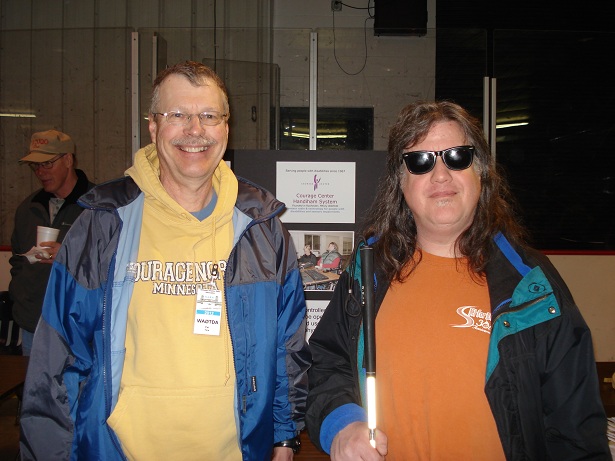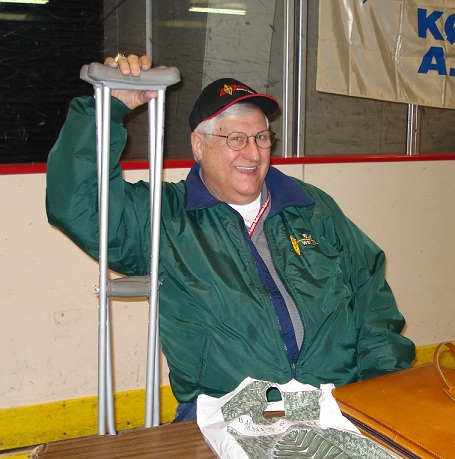Welcome to Handiham World!

As we head into the longer daylight hours here in the Northern Hemisphere, band conditions will begin to favor the higher frequencies of the High-frequency (HF) spectrum and thunderstorm static and absorption will get worse with more hours of solar energy hitting the "D" layer of the ionosphere. HF radio waves are not reflected by the D layer but do lose energy as they pass through.
As explained by Wikipedia, "This is the main reason for absorption of HF radio waves, particularly at 10 MHz and below, with progressively smaller absorption as the frequency gets higher. The absorption is small at night and greatest about midday. The layer reduces greatly after sunset, a small rest remains due to galactic cosmic rays. A common example of the D layer in action is the disappearance of distant AM broadcast band stations in the daytime."
This, of course, means that amateur radio operators will have to stay up late into the night to make contacts on bands like 160 and 80 meters once the long days make those bands difficult to use for all but a few hours out of 24. That same solar energy heats the ground, causing convection and building thunderstorms that make those same bands crackle with noise all summer long. On the plus side, the conditions are still acceptable on 160 and 80, so you still have some time to collect some DX contacts. Don't wait too long though, because the days are getting longer by a few minutes each day. (Exactly how many minutes depends on your location.)
Fortunately, 20 meters is coming back to life and will improve with the upcoming season. Sunspot numbers are up. Today, we see four groups: 1045, 1051, 1052, and 1053. Higher sunspot numbers are associated with better long distance propagation conditions on the higher frequencies of the HF spectrum. 20 can be a crowded band, but soon 17, 15, 12, and 10 will open up for DX and the fun will really begin for a lot of our newly-licensed Generals. These operators have never experienced the fun of a solar maximum!
When conditions are good on 14 mHz and above, you can work great distances with low power and surprisingly simple antennas. Even that plain vanilla wire antenna that never seemed to hear much of anything on 10 meters can come to life with DX. Mobile antennas can be used to work the world. QRP, or low power operation, becomes practical for daily use. Furthermore, because the length of an antenna like a vertical or dipole is inversely proportional to the frequency at which it will be used, the return of the higher frequencies means that you can perhaps finally fit a shorter, but highly effective, antenna into limited space. A dipole for use on 3.925 mHz is around 120 feet (37m) long, whereas a dipole for use on 28.310 mHz is only about 16 and a half feet (5m). This makes balcony and attic antennas practical.
As conditions begin to pick up on the 10 meter band, Handiham members who hold Novice or Technician licenses can take advantage of SSB phone operation between 28.300 and 28.500 mHz. Since most will be Technicians whose only experience on the air will have been with 2 meter FM repeaters, it will be a fantastic change for them - and a lot of fun! Imagine not having to depend on a repeater to talk to other stations far from your own location. Imagine not having to wait for drive time to be over before you can use a repeater. Imagine being able to tune with your VFO up and down the band instead of being stuck on a single repeater frequency. Imagine making new friends around the world and collecting QSL contacts for Worked All States and DXCC.
With the additional fun comes new responsibilities. Working the HF bands is different than repeater operation in other ways that newcomers might not realize. For example, while a repeater is silent for a period of time, that means that the repeater is not in use and you can usually just throw out your callsign to look for a contact. On HF, just because you don't hear anything on a given frequency does not automatically mean that the frequency is clear. In HF operation, you may not be able to hear both sides of a QSO because of propagation conditions. If you just grab the frequency and start calling CQ, you may be informed that the frequency is already in use! On HF you have to listen even more than usual, and once you are fairly sure the frequency is probably clear, it may be prudent to ask, "Is this frequency in use?", after which you give your callsign.
Another difference between repeater operation and HF is that you can generally count on being able to complete the contact on a repeater, because the system is set up to maintain solid copy as long as both stations remain in the repeater's coverage area. On HF you can begin a QSO with excellent copy, only to find that changing band conditions suddenly cause you to lose the other station or sometimes cause other stations to "skip in" from far distances and cause QRM. Under such conditions, you have to be sure to trade essential information about yourself and your station before conditions change.
Contests are another feature of HF operation that will be new to those who have cut their teeth on repeaters. On contest weekends, the band can literally fill with stations eager to rack up points, making it either really hard to enjoy a long QSO with a friend or, to make the best of it, a fun way to make a lot of contacts and improve your operating skills. You can find out what contests are going on at any given time by visiting ARRL.org and following the "Operating Activities" link.
So to those of you who have not been on HF, let me extend a warm welcome to a whole new kind of operating. We are going to have a lot of fun in solar cycle 24!
For Handiham World, I'm...
Patrick Tice, wa0tda@arrl.net







